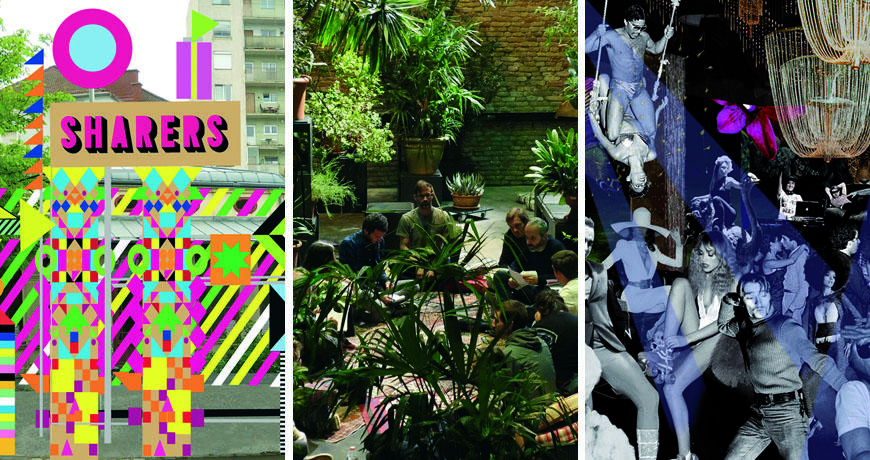

This year, steirischer herbst is proclaiming an Arrival Zone in the area around the Volksgarten Pavilion – a network of art spaces and venues for events. Over a period of several months the aim is to develop a participatory art project.

Arrive. Stay. Depart. Return. Become visible. Like hardly any other district, the Annenviertel is characterised by the coming and going of people of different origins. A suburb of Graz on the River Mur, even centuries ago the area, comprising what are today the districts of Gries and Lend, offered people easier conditions for settling away from the middle-class city centre. Today, Graz is Austria’s fastest growing conurbation – an “Arrival City”, as Doug Saunders describes it in his book of the same name.
In “Open Wide”, Morag Myerscough and Luke Morgan install marks in urban space that highlight the cultural diversity in this part of the city. Involving over 100 people from Graz and giving them a sense of belonging and ownership, they will generate a new language of patterns for the steirischer herbst venues – creating markers fo the Arrival Zone.
From the Volksgarten it reaches over to Volksgartenstraße to < rotor >: The exhibition “New Graz” brings together a number of artistic initiatives curated and designed in a collective process and aimed at investigating the conditions met by new arrivals in districts such as Annenviertel and cities such as Graz.
Further towards Annenstraße, German artist Julian Hetzel opens his guilt factory: “Schuldfabrik”. Starting with his own, very personal “debt package”, for steirischer herbst, Hetzel builds a trail with different options for exploring the various aspects of debt – and perhaps even for paying it off. There are several ways in, but no way out: Once you go into the production methods of the “Schuldfabrik”, there are no more excuses.
The Volksgarten pavilion, which will turn into a “House of Open Gates” during the festival, is the central point of the Arrival Zone: A project room for (new) arrivals and long-established residents. The temporary design of the pavilion’s interior offers room to the “Samowar Café” where the elegant teakettle and countless cups of tea invite visitors to engage in a verbal, nonverbal and artistic exchange.
While the “House of Open Gates” gets proclaimed at the pavilion, the artists collective Mamaza turns the Orpheum theatre into a “Garden State”. For five days, the Orpheum is being transformed into a public garden which obeys its own laws and invites the local population to reflect, discuss and stay a while. The sun rises at nine and sets at six in the evening. By day and night, come sunshine or storm, the result is a shared site that allows us to experience space and time.
The “Garden State” is also the location for this year's herbst conference “Welcome to the former West” as well as the herbst Akademy.
The Arrival Zone will be open to everyone during the day, night-owls will be able to attend a new programme at the Orpheum: club panamur, featuring a host of international live acts and DJs who will each be transplanting their particular scene to Graz for one night. The focus is on hybrid forms, crossing borders, mixing and the free association of sounds, genres, origins and modes of working. club panamur is much more than a concert programme, it explores the central theme of the festival with different means – through the night.
Everyone is invited to get actively involved and question their own ideas: What colours or patterns do we read as Arabic, British, Indian, Russian, Styrian or African? And what happens when these allocations suddenly stop working? With the aid of temporary meeting places the aim is to engage in a colourful, playful and irreverent celebration of a part of urban space in Graz, that left behind the compulsion to follow dominant culture and homeland clichés long ago.